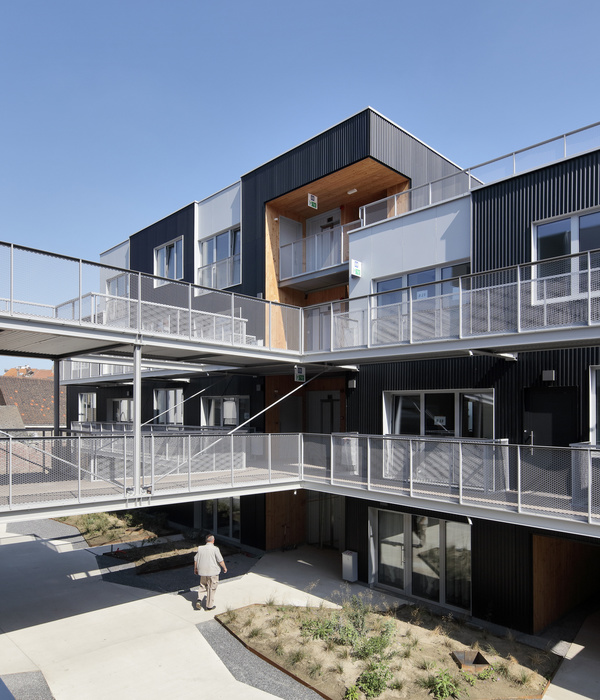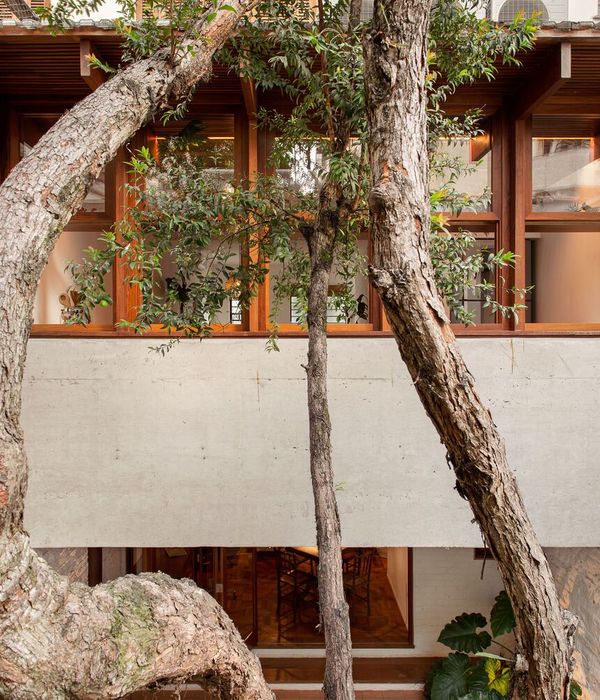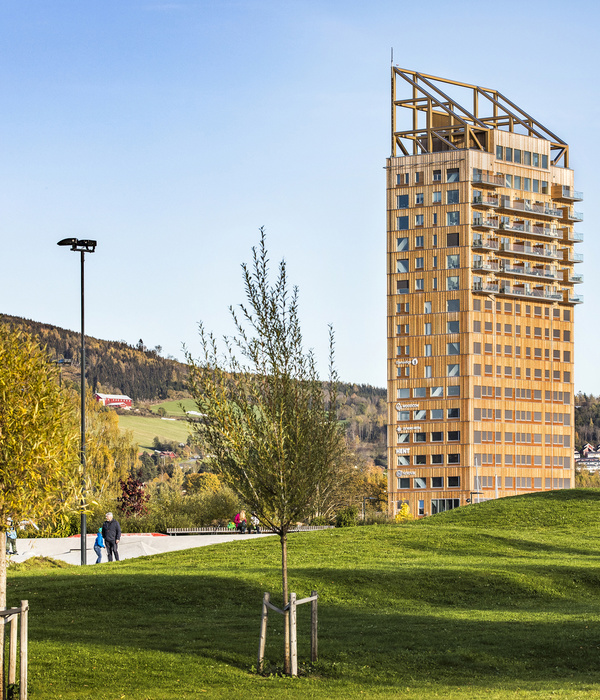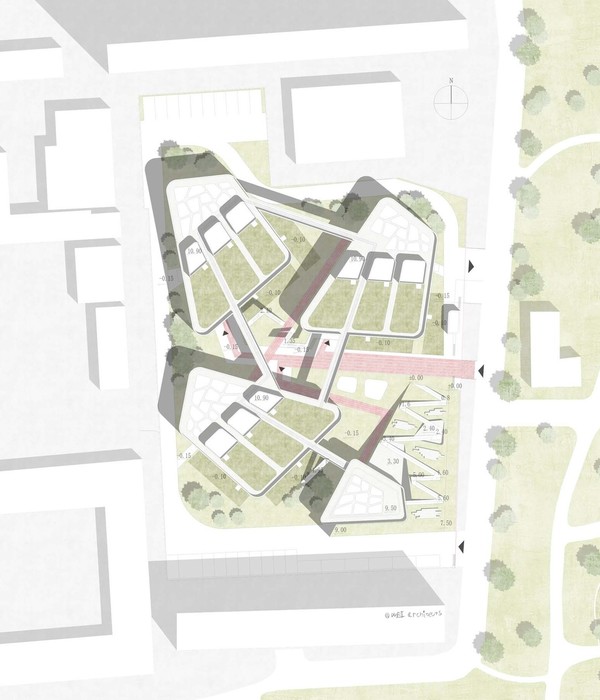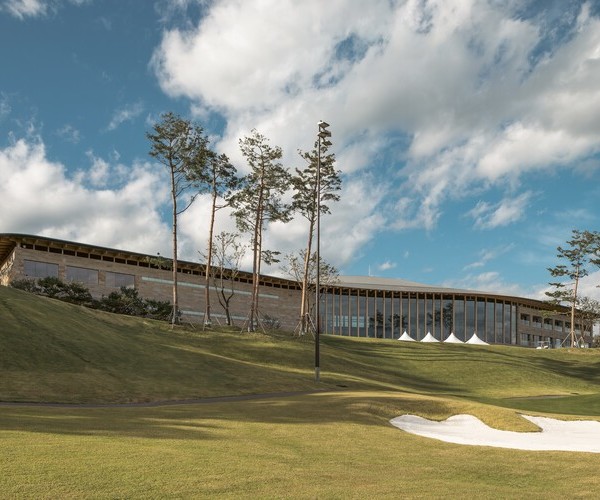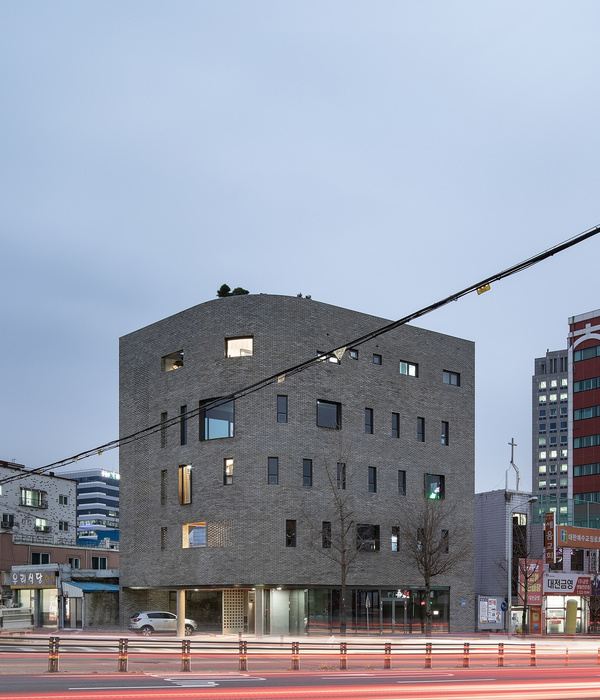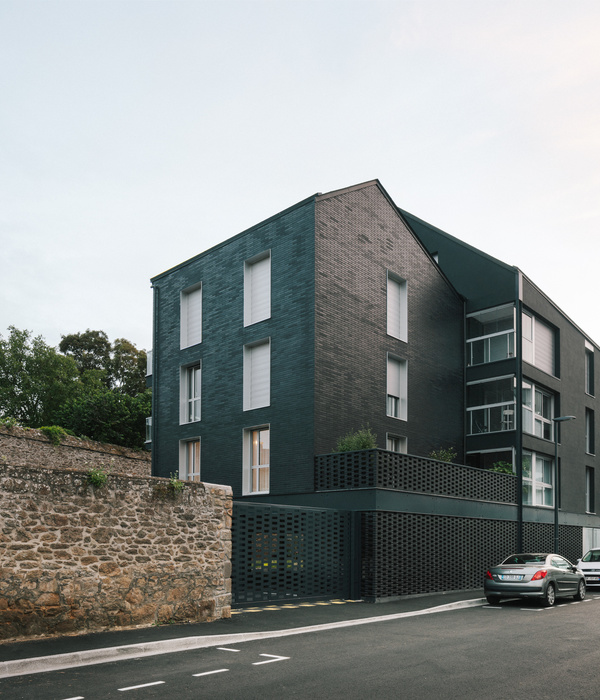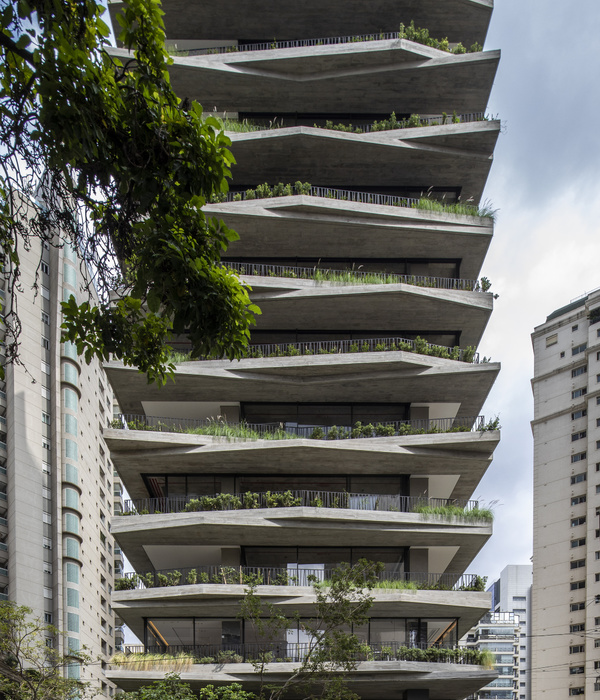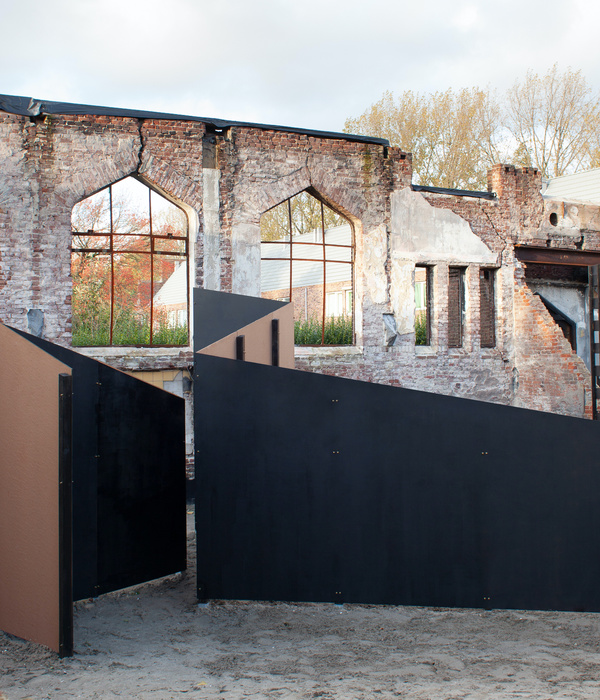中国经历了一个前所未有的城市化进程,从农村社会占主导地位,到2050年估计将有10亿中国人生活在城市。在这一转变过程中,至今为止,城市移民已经让数十万个村庄“空心化”现象十分严重。其中许多村落具有几十代人的社会、文化和纪念性价值,但在目前却缺乏重大的未来意义。
为了应对这一挑战,NEXT建筑事务所与荷兰遗产与市场研究所(IVEM)、Smartland(景观设计)、Total Design(平面设计)及众多艺术家一起,应江西省金溪县政府的要求,为其102个古村落之一的大坊村制定了一个振兴策略。NEXT建筑师事务所负责总体规划、建筑和内部设计。
▼改造后的大坊村鸟瞰,aerial of Dafang Village after renovation ©NEXT architects
China has undergone an unprecedented urbanisation process, from being a predominant rural society to having an estimated one billion Chinese living in cities in 2050. In this transformation so far, urban migration has left hundreds of thousands of villages abandoned. Many of these have dozens of generations of social, cultural and monumental value but are currently lacking major future significance.
To address this challenge, NEXT architects, together with IVEM (Dutch Institute for heritage and marketing), Smartland (landscape design), Total Design (graphic design) and numerous artists were asked by the Government of Jinxi, Jiangxi Province to develop a strategy for one of its 102 abandoned villages, Dafang. NEXT architects was responsible for the masterplan, architecture and interior.
▼村庄顶视图,top view of the village ©NEXT architects
“乡村振兴是中国未来的重要发展方向之一。我们认为,这就要求在新与旧、居住与旅游、历史与未来之间找到平衡点进行设计。”——John van de Water, 北京NEXT建筑师事务所合伙人
“Rural revitalization is one of China’s key future developments. We believe this asks for the design of balance between old and new, living and visiting, history and future.”——John van de Water, partner NEXT architects Beijing
大坊村有900多年的历史,仅存的明清时期古建十多年缺少维护。金溪政府 “希望荷兰文化概念振兴大坊 “的愿望被转化为设计策略:”以新应变”。NEXT建筑师为中荷艺术家们设计了一个灵活而有吸引力的环境,让他们在当地工作、交流和展览。整个村子,包括建筑和景观,都成为了一个能够不断自我革新的互动环境。因此,未来的游客和居民将被这里所吸引和启发。
Dafang has over 900 years of history but with only a few Ming and Qing Dynasty artefacts remaining, it had been dilapidated for over ten years. The Jinxi governments’ ‘wish for Dutchness to revitalise Dafang’ was translated into the design strategy: ‘adapt to newness’. NEXT architects designed a flexible and attractive environment for Chinese and Dutch artists to work, interact and exhibit locally. The whole village, including its architecture and landscape, becomes an interactive environment constantly able to re-invent itself. As a result, a new generation of visitors and inhabitants will be attracted and inspired.
▼改造后的村庄外观,appearance of the project after renovation ©NEXT architects
改造措施的设计分为三个层面。首先,在可能的情况下,对城镇空间、建筑和景观进行修复,使用新材料,在新旧元素之间建立起对话。例如:用玻璃瓦恢复了老房子的屋顶,修复了古老的灌溉系统,添加了诸如天然的植物过滤器等元素来净化水。
Interventions are designed on three levels. Firstly, urban space, architecture and landscape are restored where possible, with new materials, creating a dialogue between old and new elements. For example: glass roof tiles are used to restore the roofs of the old houses and the ancient irrigation system has been restored adding elements such as a natural helophyte filter to clean the water.
▼项目保留并修复原始建筑材料,the materials of the original buildings were restored ©NEXT architects
▼从乡村客厅看向瞭望塔,新旧材料间形成对话,view to the watchtower from the public hall, conversation between new and old materials ©NEXT architects
其次,还增设了瞭望塔和乡村客厅:新的建筑结构借鉴了现场的先例。这一带的古村落都有防御用的瞭望塔。原有的瞭望塔早已不复存在,新的瞭望塔被设计成了犹如两条巨龙相互缠绕,互相支持,团结一心的形状。瞭望塔上随着每一台阶的转移,目光都将游离在故乡和远方,既可以看到村子里的新旧景色,也可以看到远处的乡村风景,远眺地平线上的山峦。瞭望塔在当地被誉为 “游子塔”,这让人想起中国著名诗人李白的一首诗,诗中描写了人们思亲返乡的故事。
▼瞭望塔生成图解,generation diagram of the watchtower ©NEXT architects
Secondly, a watchtower and public hall have been added: new building structures that take cues from on-site precedents. Ancient villages in this area all had watchtowers for defense purposes. With the original tower long gone, a new watchtower has been designed in which two intertwining routes embrace each-other, loosely resembling a giant Chinese ‘dragon column’. The watchtower provides alternating views over old and new in the village, as well as views as far as over the rural landscape towards the mountains at the horizon. Locally, the watchtower is embraced as the ‘Wandering Tower’, reminiscing a poem of the famous Chinese poet Li Bai about people waiting for loved ones to return to their hometowns.
▼瞭望塔外观,appearance of the watchtower ©NEXT architects
▼瞭望塔入口,entrance of the watchtower ©NEXT architects
▼交错的步道提供不同方向的视角,interweaving routes provided alternating views ©NEXT architects
在村子的中心,NEXT设计了新的乡村客厅(古樟树咖啡厅)。乡村客厅是在文化大革命时期被毁的四合院旧址上修建的。独特屋顶的灵感和造型来自于村旁的一棵千年古樟树,几百年来,它那高大的树冠为村民们提供了一个聚集的空间。古樟树的造型融入村子的结构中,提供了一个有遮蔽性的集体空间。树叶形态的定制陶瓦立面也为鸟儿提供了筑巢的地方。
▼乡村客厅设计概念,design concept of the public hall ©NEXT architects
In the center of the village, a new public hall is realized. The hall is built on the former site of a courtyard building that was destroyed during the cultural revolution. The inspiration and shape for the unique roof comes from a century-old camphor tree outside the village, whose lofty canopy for decades provided a gathering space for the villagers. The camphor hall dissolves in the fabric of the village and provides a shaded collective space. The terracotta tiled facade provides places for birds to build nests.
▼乡村客厅外观,external view of the public hall ©NEXT architects
▼建筑提供有遮蔽性的集会空间,地板为蒙德里安式图案,the building provided covered gathering space with a Mondrian-like pattern on the floor ©NEXT architects
三是通过艺术和功能活动对空间进行规划。新的乡村博物馆、图书馆和艺术家工作室是给村庄带来新活力和创造力的新功能。艺术家被允许对村庄的结构做出应对:增加、改变和改造村庄的环境。例如,乡村客厅的地板被一位中国艺术家用蒙德里安式的图案画了出来。荷兰艺术家赫尔曼-拉默斯在一栋老房子里安装了一架飞机,名为 “梦”。
Thirdly, there is the programming of the spaces through art and activity. A new village museum, a library and artist studios are amongst the new functions that bring new life and creativity to the village. Artist are allowed to react on the village structures: to add, change, and transform its context. The floor of the public hall has for example been painted in a Mondrian-like pattern by a Chinese artist. Dutch artist Herman Lamers has installed an airplane in an old house, called ‘The Dream’.
▼老房子里设置艺术作品,art works in the old buildings ©NEXT architects
▼带有图案的的乡村道路 village road with patterns ©NEXT architects
整体而言,荷兰-大坊创意村是中荷建筑师、设计师和艺术家多领域共同合作,为农村带来新生活的启发。
As a whole, Holland-Dafang Creative Village is an inspiring example of a multidisciplinary collaboration of Chinese and Dutch architects, designers and artists to bring new life to rural areas.
▼夜景,night view ©NEXT architects
“荷兰-大坊创意村已于上个月开放,每天都会吸引上千名游客前来参观。我们希望它将产生积极持久的社会和文化影响,并为中国的古村落提供一个新的发展模式。”NEXT建筑师事务所合伙人蒋晓飞说。
“Holland-Dafang Village opened last month, attracting already thousands of visitors each day. We hope it will have a – positive lasting – social and cultural impact and will provide a new development model for abandoned Chinese villages,” says Jiang Xiaofei, partner NEXT architects Beijing.
▼瞭望塔一层平面图,first floor of the watchtower ©NEXT architects
▼瞭望塔二层/三层平面图,second/third floor plan of the watchtower ©NEXT architects
▼瞭望塔立面图 elevation of the watchtower ©NEXT architects
▼乡村客厅一层平面图,first floor plan of the public hall ©NEXT architects
▼乡村客厅屋顶平面图,roof plan of the public hall ©NEXT architects
▼细部图纸,detail drawings ©NEXT architects
类型:农村复兴 地点:江西省大坊县/CN 客户:金溪县政府 面积:48.000平方米 状态:实现 初步设计:2018年 完成时间:2020年 设计师:NEXT建筑师 TEAM:John van de Water、蒋晓飞与高爽、匡文辉、沈雪、刘文雅、孙怡、路晓瑞、朱珺成、张驰、任婉婷、岳海婷 合作:IVEM (Dutch Institute for Heritage and Marketing), Smartland architects, Total Design and Linda Vlassenrood
Type: rural regeneration Location: Dafang, Jiangxi Province / CN Client: Jinxi government Size: 48.000 m2 Status: realized Preliminary design:2018 completion: 2020 Design: NEXT architects Team: John van de Water, Jiang Xiaofei with Gao Shuang, Kuang Wenhui, Shen Xue, Liu Wenya, Sun Yi, Lu Xiaorui, Zhu Juncheng, Zhang Chi, Ren Wanting and Yue Haiting Collaborator: IVEM (Dutch Institute for Heritage and Marketing), Smartland architects, Total Design and Linda Vlassenrood
{{item.text_origin}}

